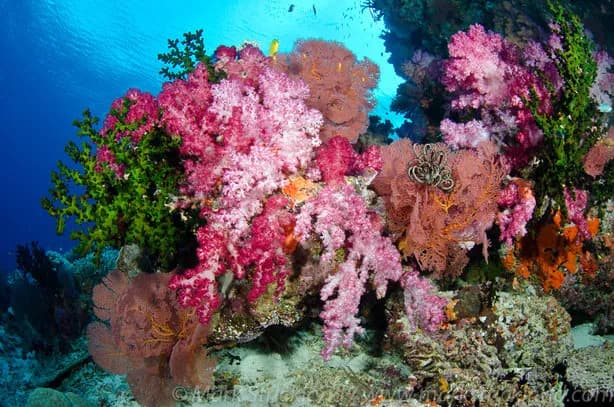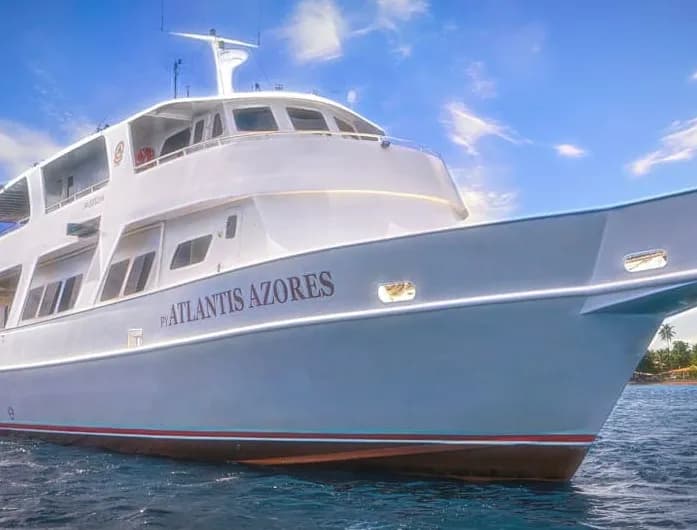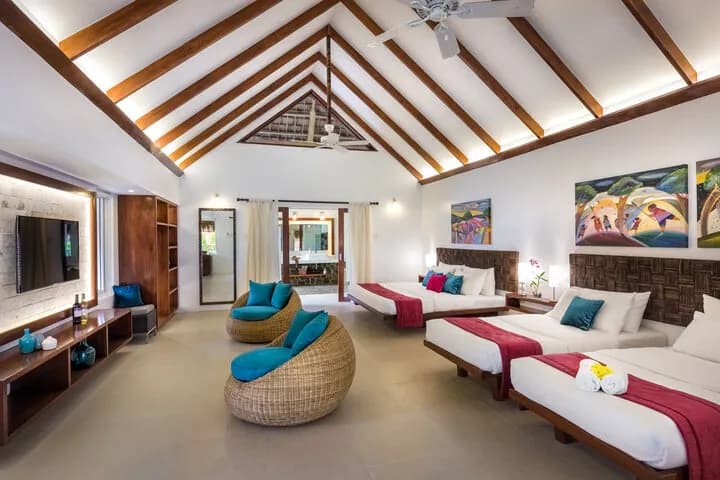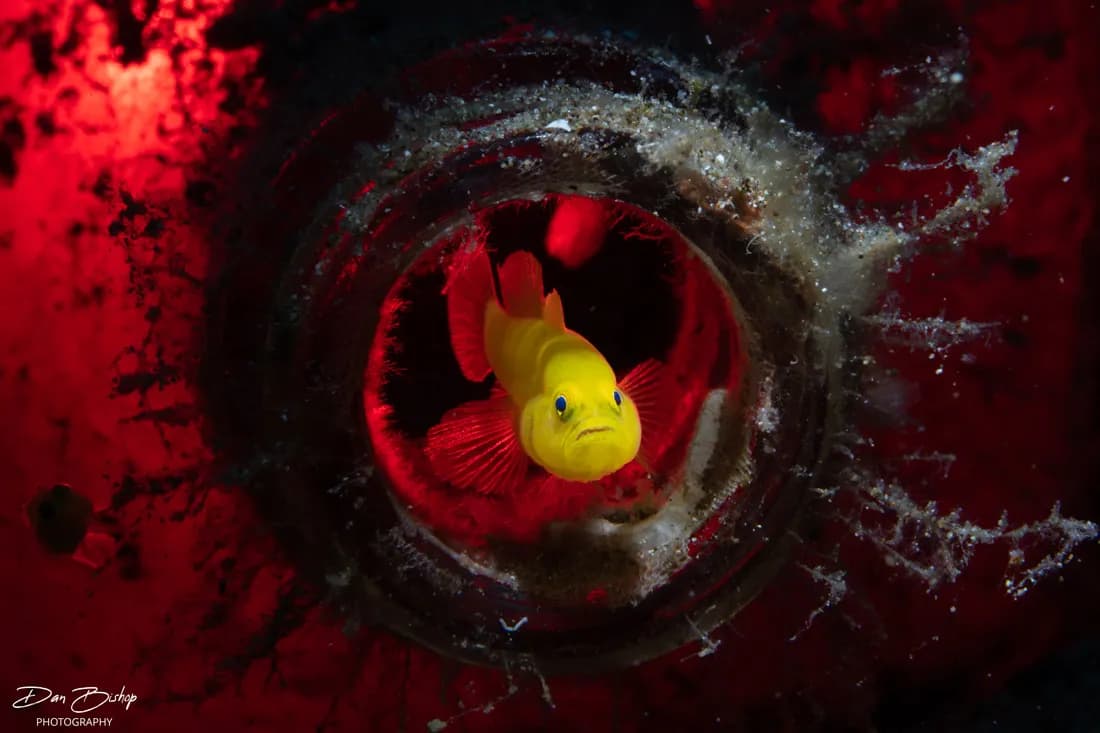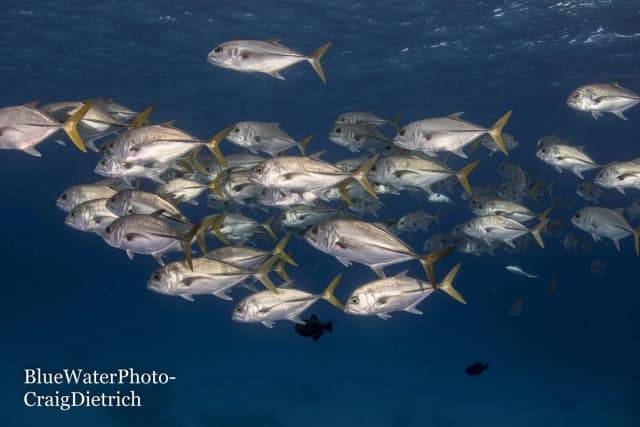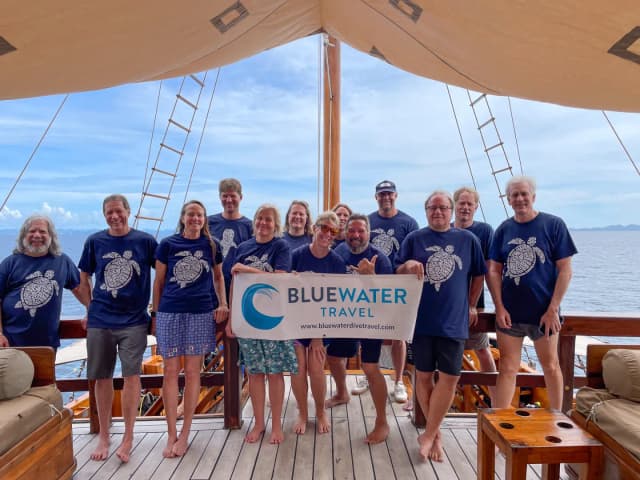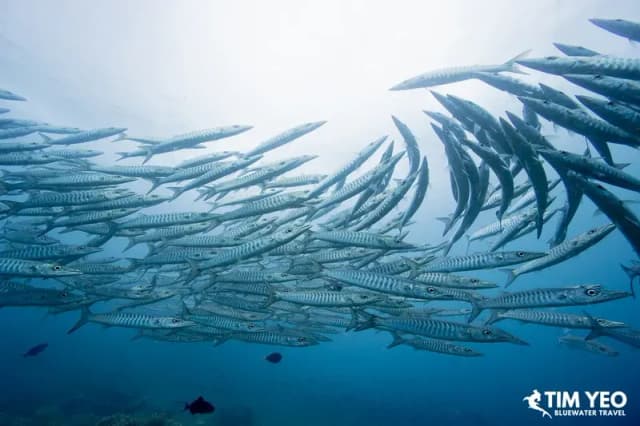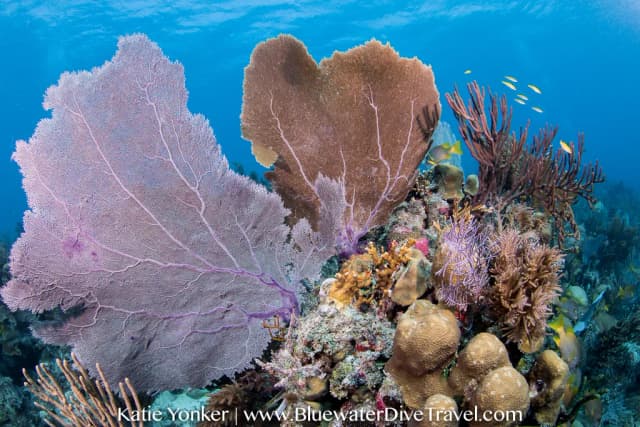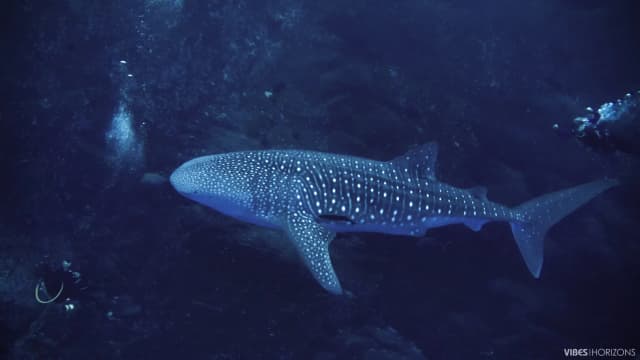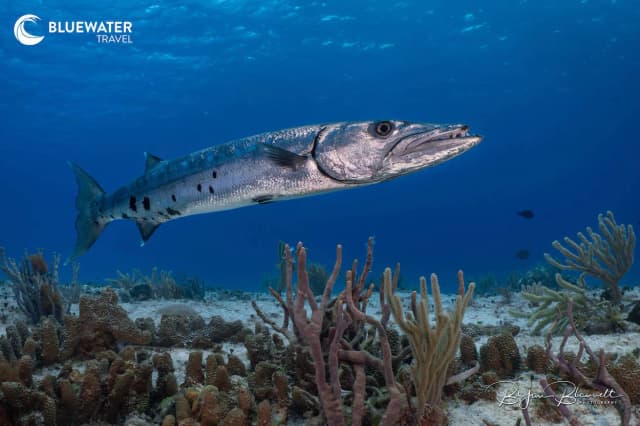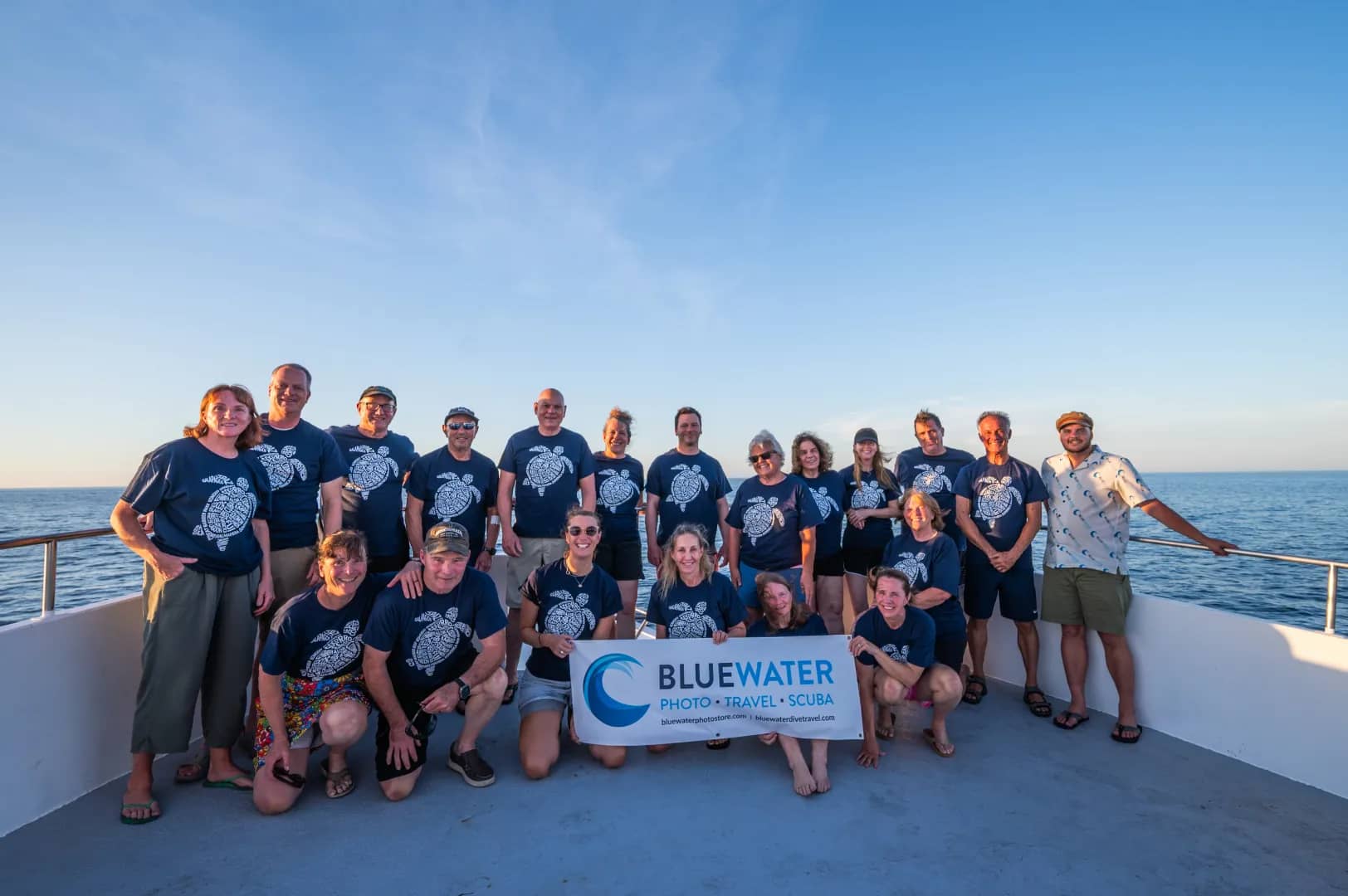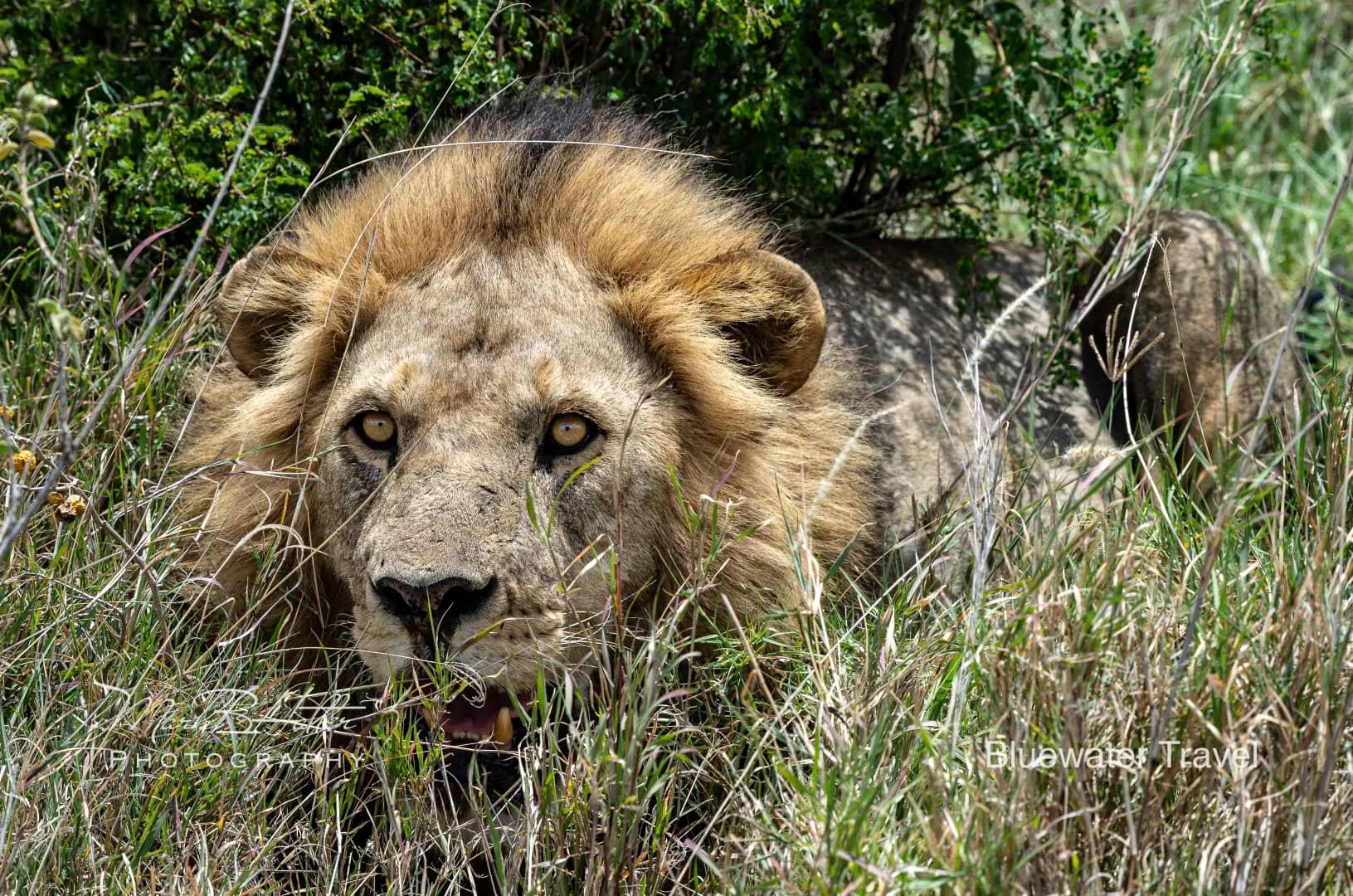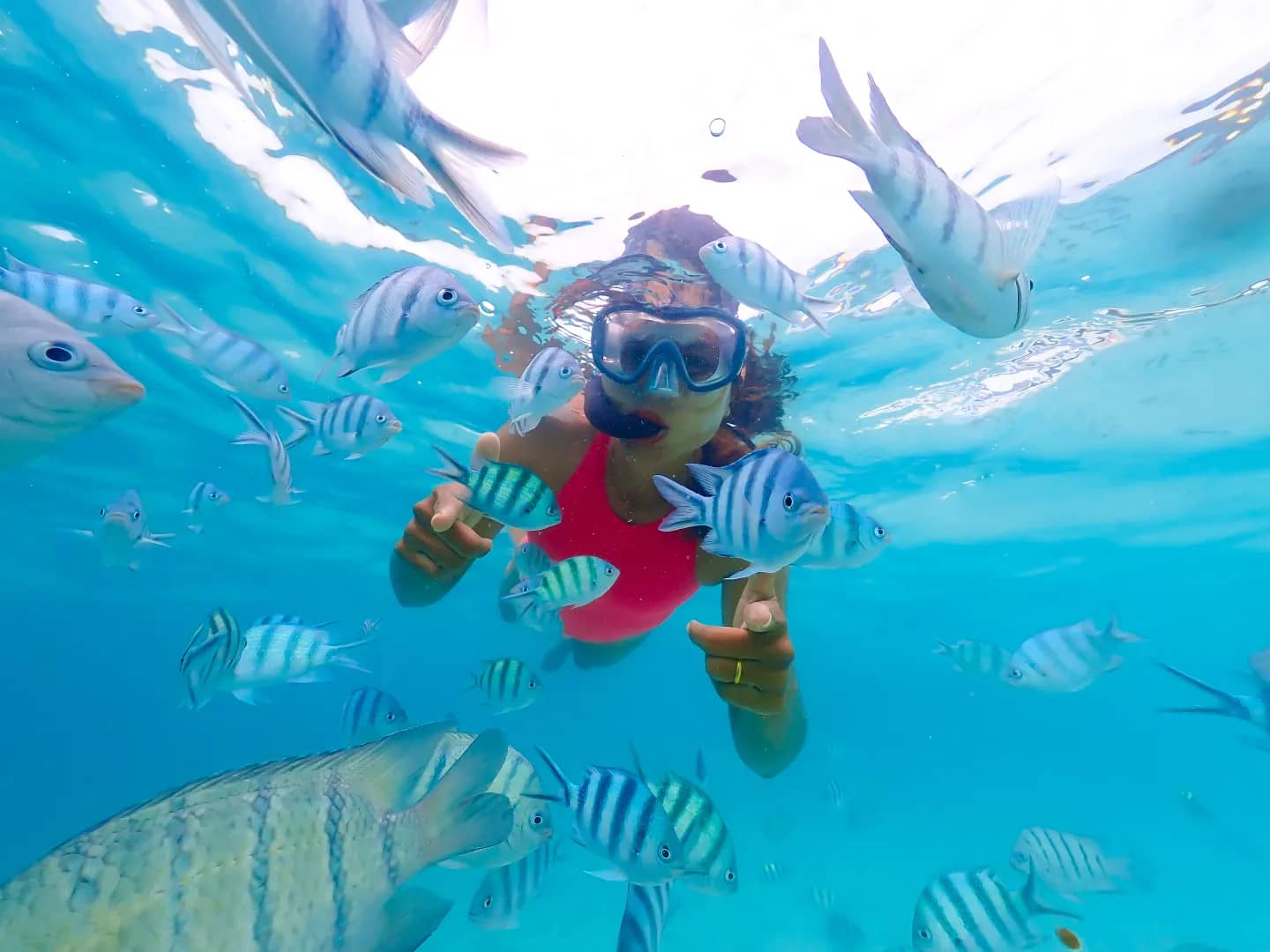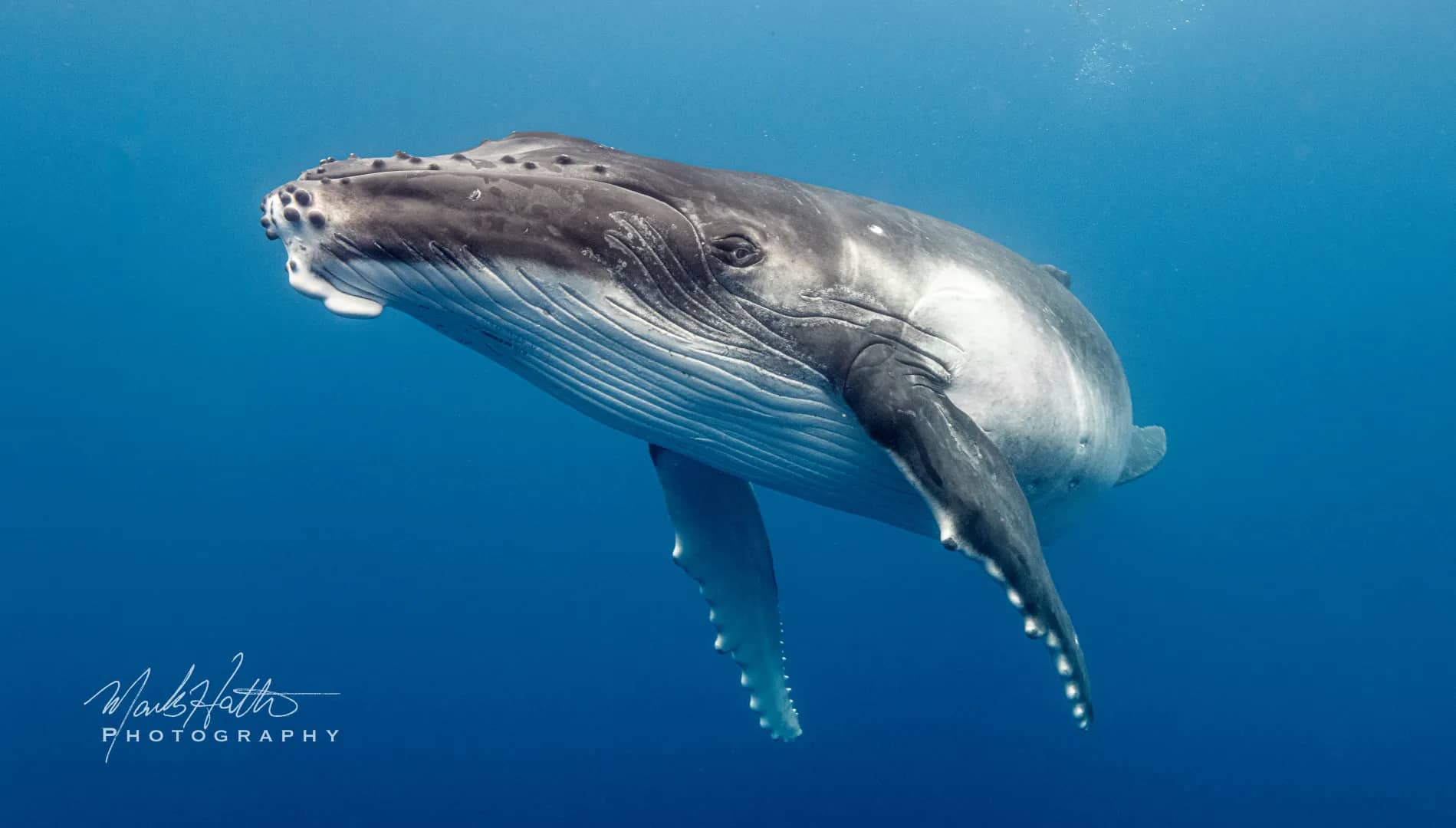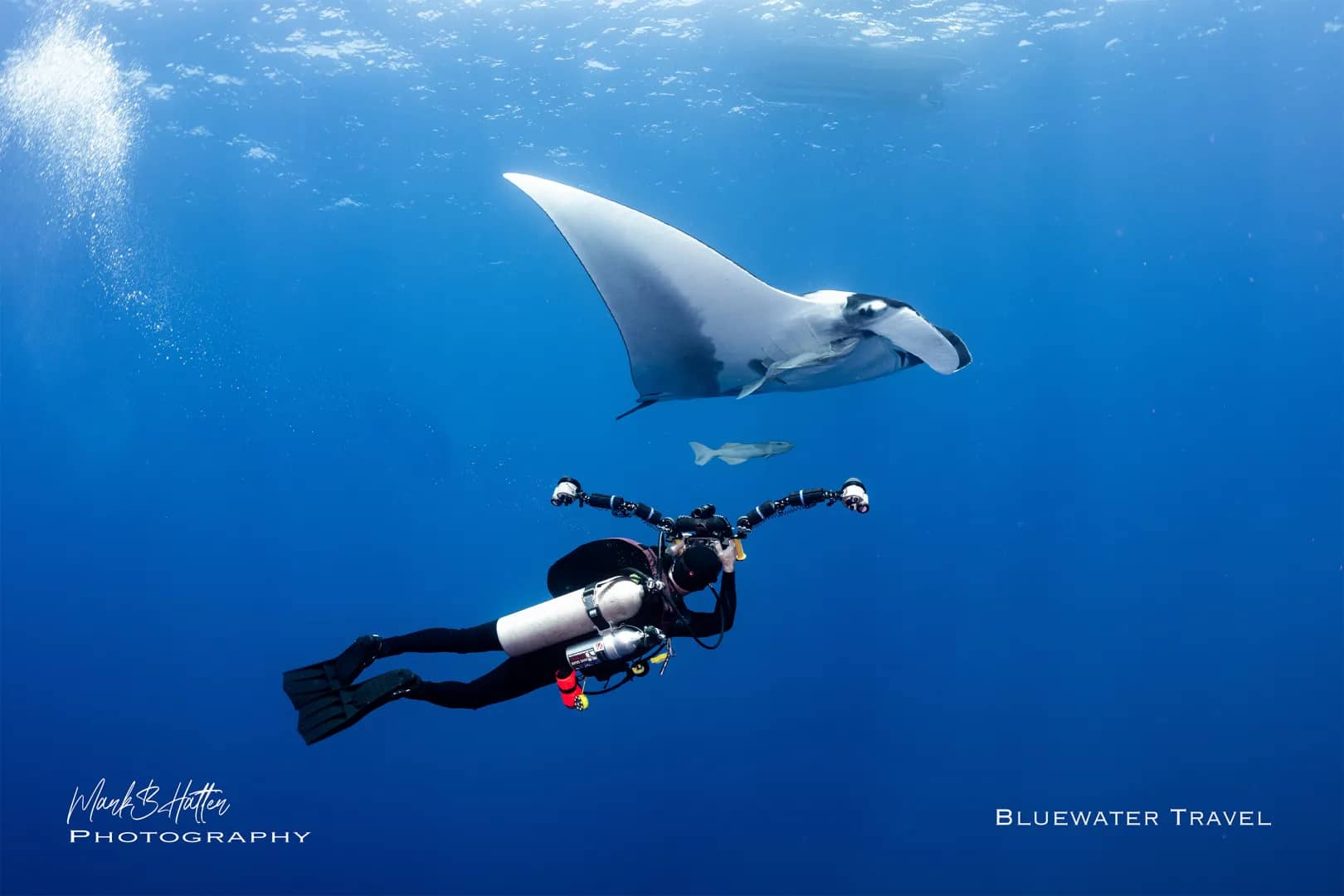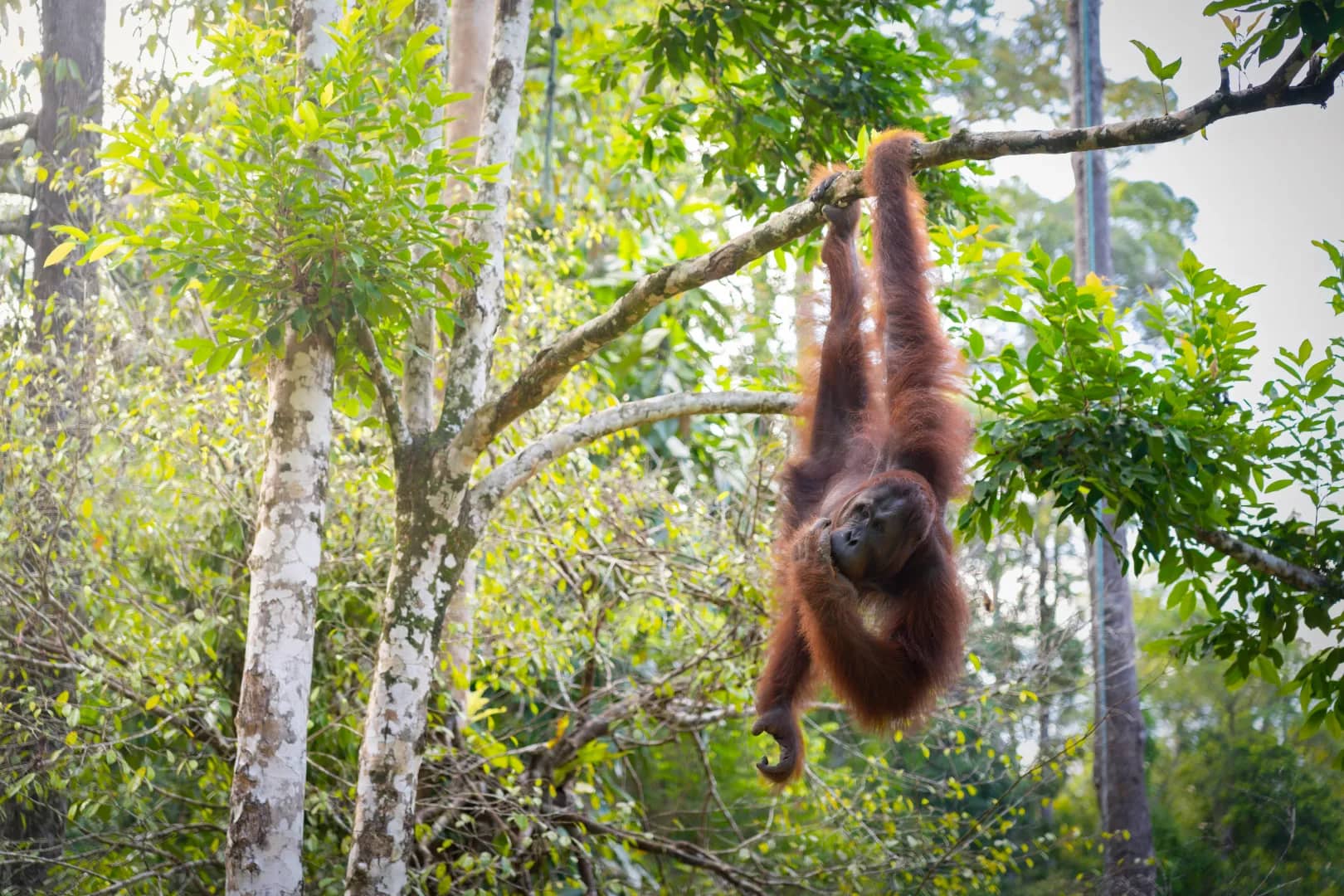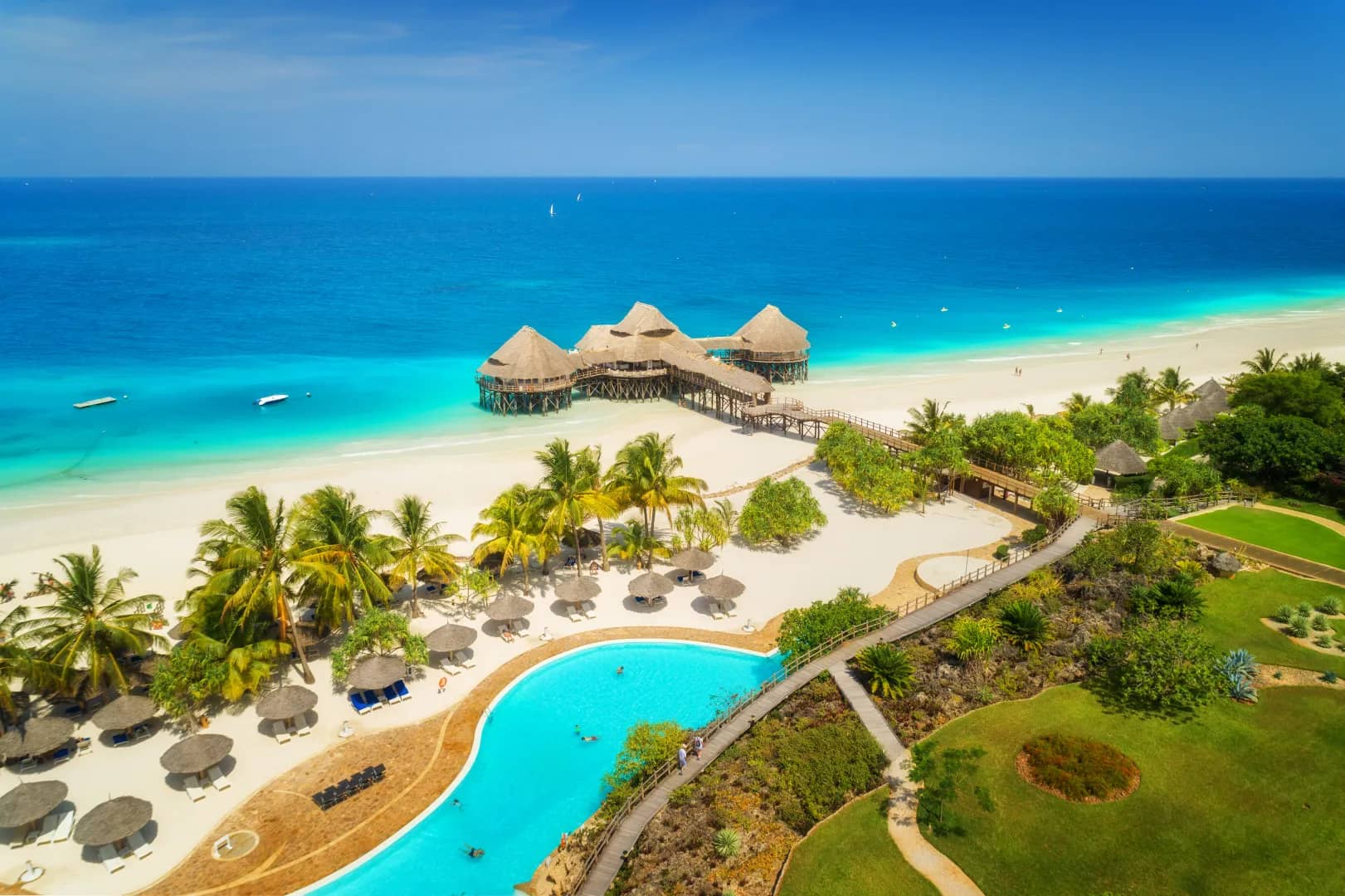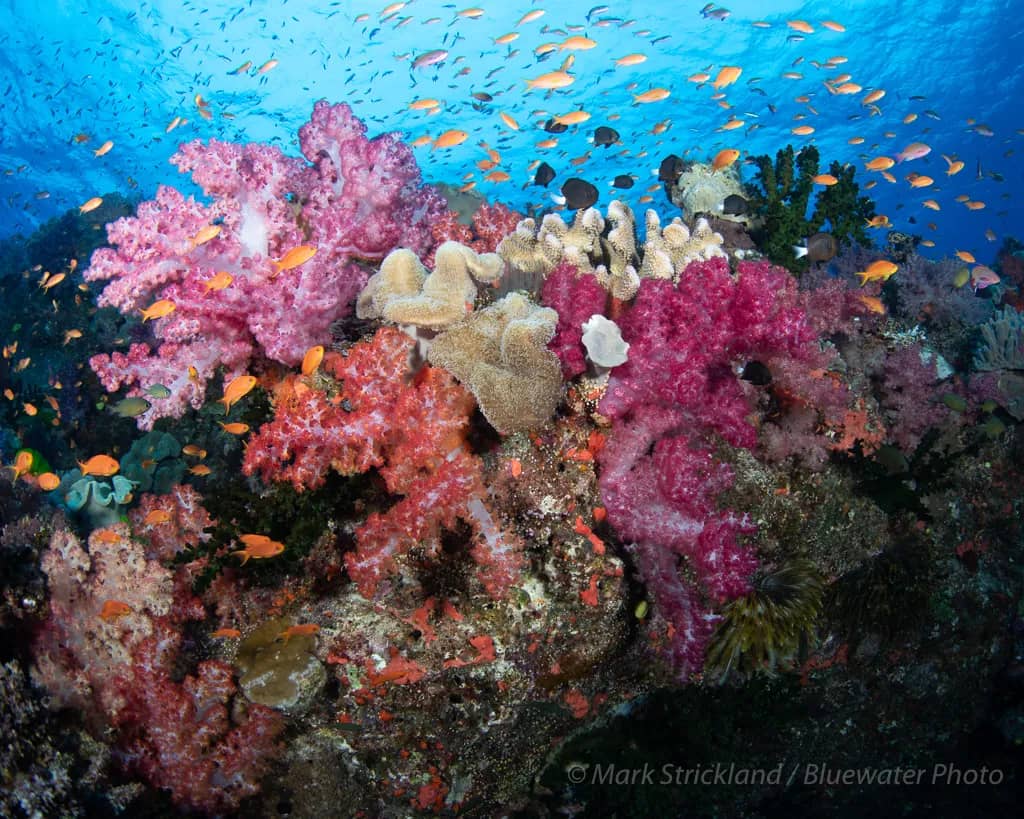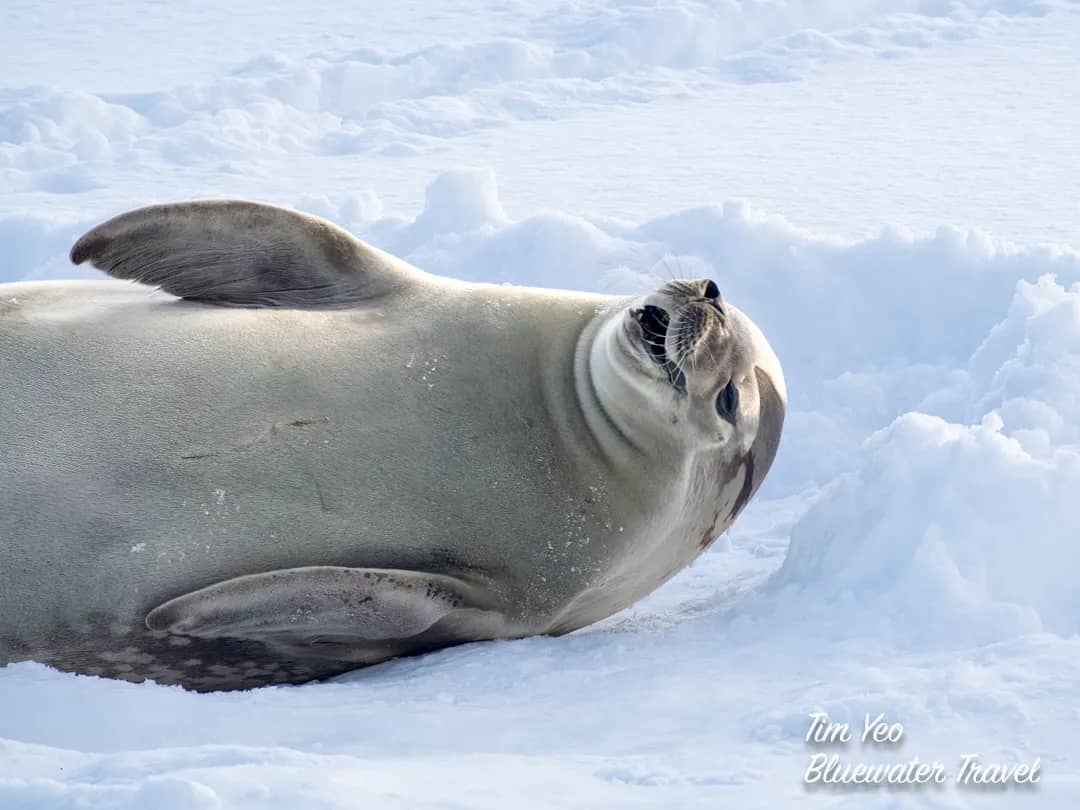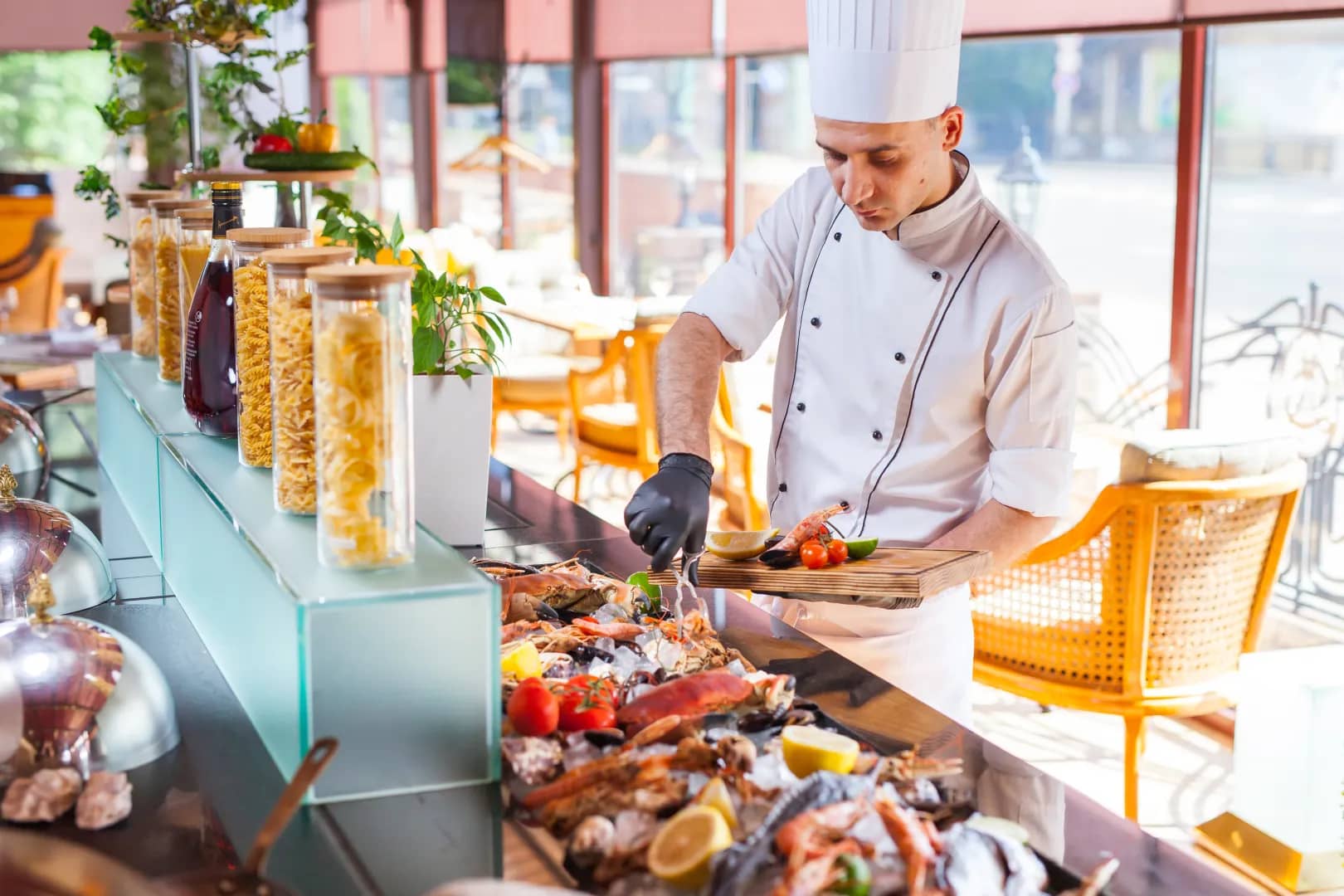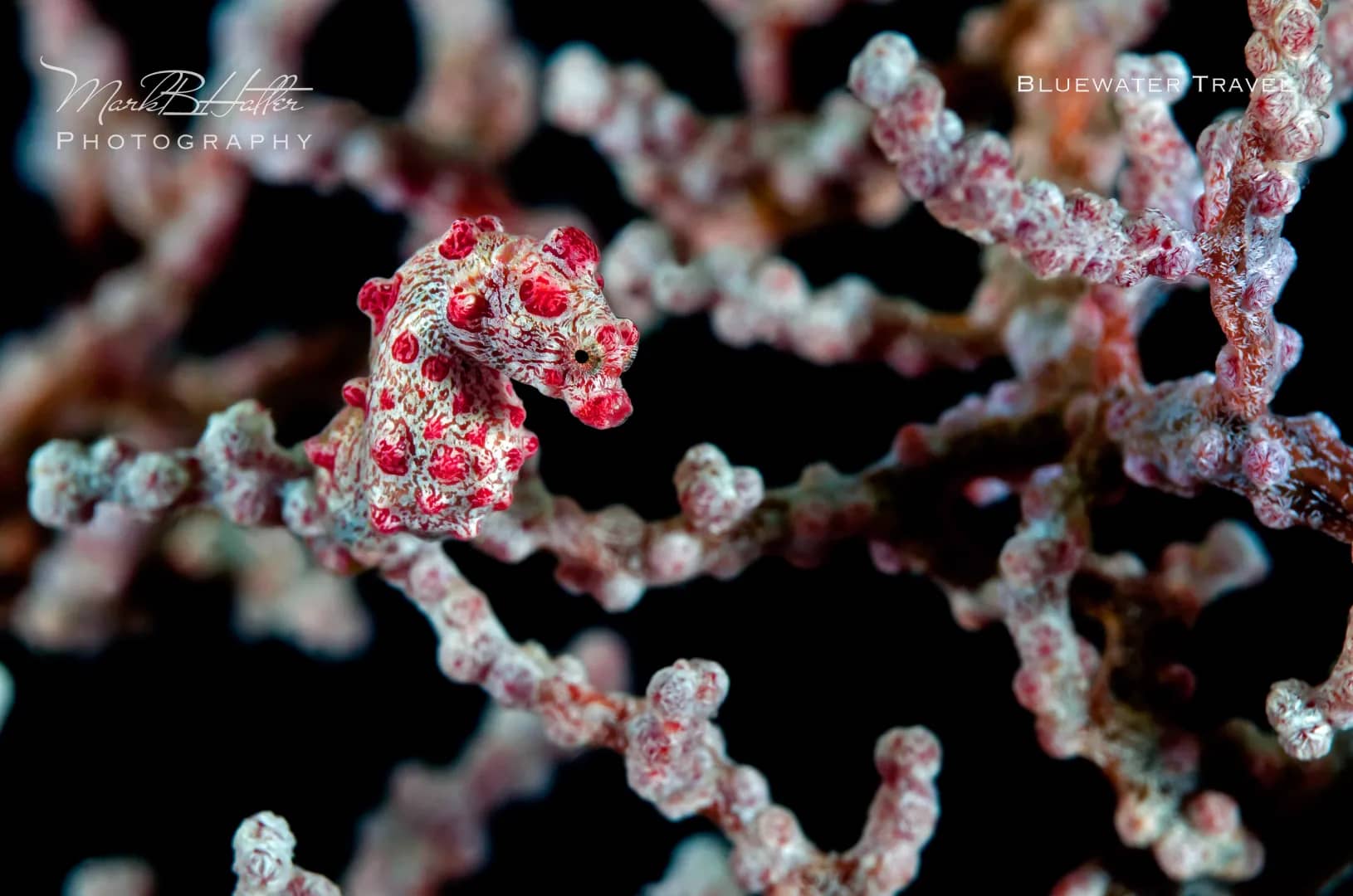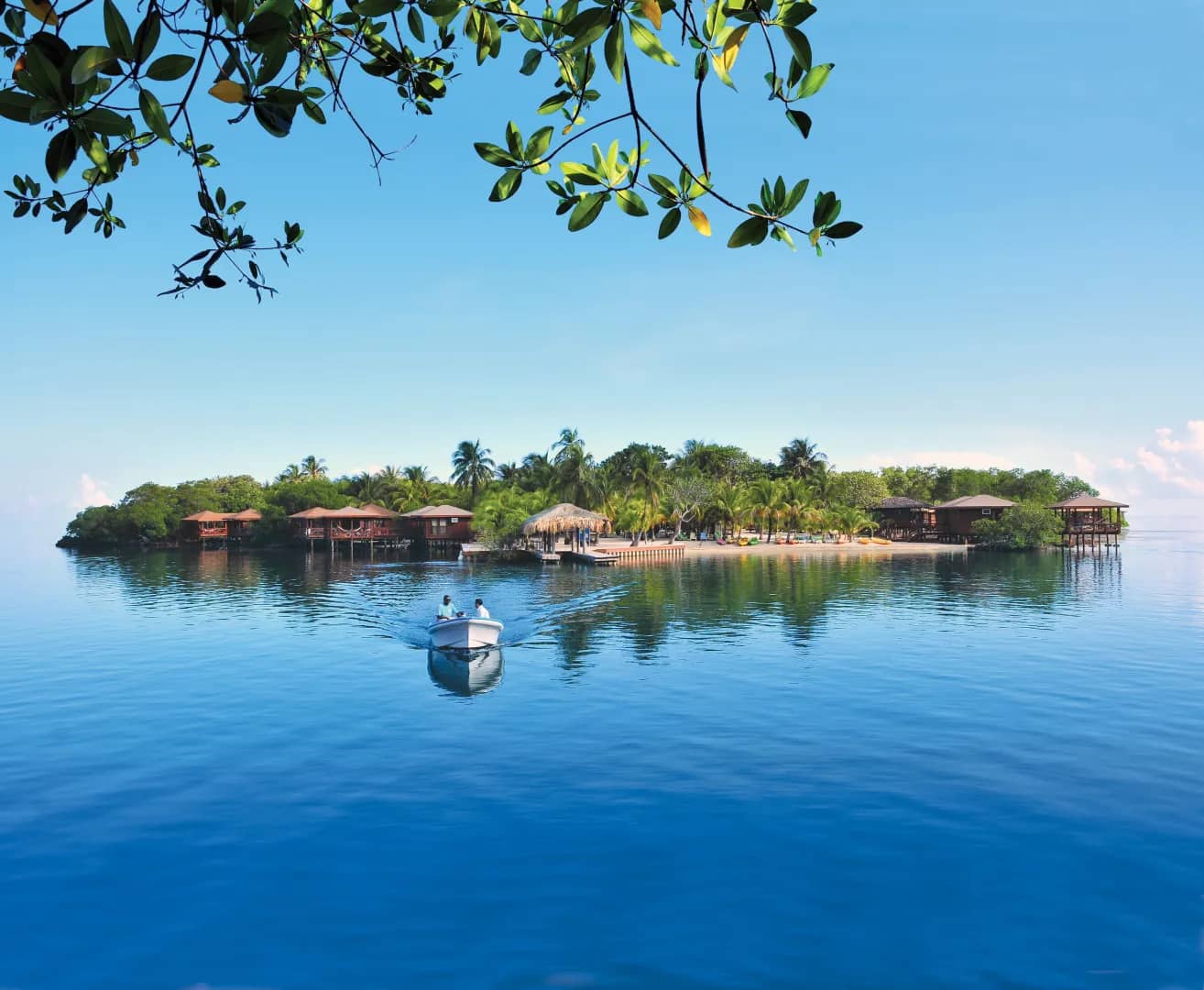Best Scuba Diving in the World in 2025/26
Quick Overview
Explore the world's premier scuba diving destinations in 2025/26 with Bluewater Dive Travel's expert-curated list of the top 13 dive spots. From the Galápagos Islands' unique biodiversity to Raja Ampat's rich marine life, this guide offers insights into when to visit, where to stay, and what to expect underwater. Whether you're seeking large pelagic encounters or vibrant coral reefs, discover the best dive locations for your next adventure.
Introduction
Discover the best scuba diving in the world with Bluewater Travel's expertly selected list of the top 13 dive destinations to visit in 2025/26. Our travel advisors and trip leaders are always on the move, exploring the underwater world! Using their firsthand experience and feedback from our valued guests, we've curated a list that showcases the best diving in the world in 2025. From tropical to cold water locations boasting everything from large pelagic life to the tiniest macro critters, we've highlighted some once-in-a-lifetime experiences that will have you reaching for your wetsuit!
1. Galapagos Islands, Ecuador
It should come as no surprise that the Galapagos Islands is home to some of the best scuba diving in the world, and we expect it will hold the top spot for years to come. Located 560 miles off the west coast of Ecuador, the isolated volcanic Galapagos Islands offers an abundance of unique biodiversity, quite unlike anywhere else in the world. Expect cold water, challenging dive conditions suitable for experienced advanced divers, and open sea crossings that may test even the most stalwart stomachs. Trust us when we say it's worth it for massive schools of hammerheads, fascinating marine iguana encounters, and an abundance of life you must see to believe.
Rare Marine Life and Large Species in Big Numbers
Scuba diving in Galapagos is an unforgettable experience that belongs on every scuba diver's bucket list. Both above and below the waves, nature enthusiasts will spot rare endemic species such as the marine iguana, Galapagos giant tortoise, blue-footed booby, and a wide variety of large pelagics that pass through the area in huge numbers. The region that inspired Darwin's The Origin of Species belongs to a National Park and Marine Reserve, designated a UNESCO World Heritage Site.


Two dive areas in the Galapagos really stand out for the Bluewater Team as first-class. Firstly, around Wolf and Darwin Islands, you can dive with the world-famous schools of scalloped hammerheads, alongside Galapagos and silky sharks, turtles, mantas, and regular appearances from whale sharks. In contrast, at Punta Vicente Roca, arguably the best cold-water dive site in the world, watch the mysterious Mola mola visiting cleaning stations amongst a variety of smaller fauna such as the red-lipped batfish, frogfishes, barracuda, seahorses, and large schools of salemas, which offer unique opportunities for underwater photographers.
The Galapagos Islands provide a once-in-a-lifetime opportunity to experience and photograph species found nowhere else. With its proximity to the US, it is relatively easy to reach for Americans and is included on our list of best dive destinations nearby the US! Read our travel tips, get ready to don layers of thick wetsuits and a hefty weight belt, and see for yourself the magic of the Galapagos Islands.
Discover what we experienced during our Dive with Bluewater trip to the Galapagos.
Practical Info
Diving Season: Diving is year-round, however, the season is split between the warmer manta season (December - May) and cooler whale shark season (June - November).
Skill Level:Advanced. Diving the Galapagos is for advanced divers and those with a tolerance for cold water (a 5 or 7mm wetsuit is essential). There are often currents, down-currents, thermoclines, and choppy surface conditions, and negative descents are commonplace.
Water Temperature:Cold-Moderate. Temperatures range from warmer 70-86F (21-30C) to colder 60-75F (16-24C).
Getting There:Challenging. Fly internationally to Ecuadors Mariscal Sucre International Airport (UIO) in Quito or Jos Joaqun de Olmedo International Airport (GYE) in Guayaquil. Transfer from Guayaquil on to San Cristobal (SCY) or Isla Baltra (GPS) where most liveaboards depart.
Where to Stay:Liveaboards are the best option due to the remoteness of many of the dive sites. Trips are normally 8 days, 7 nights, and the best way to reach all the top spots, however, there are some special 11 day/10 night trips for those wanting to spend extra days at Wolf and Darwin Islands.
Non-Diving Activities: Most liveaboards will include at least one land-based excursion with a licensed Galapagos naturalist. Expect to see giant tortoises, land iguanas, and a variety of seabirds such as the famous blue-footed boobies, great frigatebird, and flightless cormorants. Wildlife is as fascinating on land as it is underwater.
Join our upcoming photography workshops on the Galapagos Master:
Galapagos May 2026 (10N)| May 7 - May 17, 2026 |Trip Leader: Nirupam Nigam | From $10,400
OR view the availability of some of the best liveaboards in Galapagos and book online at the best price!
2. Palau
Embark on vibrant, exciting, and diverse diving in Palau a new addition to our best scuba diving list in 2025. Palau offers scuba divers opportunities to witness mind-blowing spawning events, explore shipwrecks from Micronesias World War II theater, experience thrilling currents, and dive spectacular walls. Take your pick between liveaboard or land-based diving, and maybe even combine it with a trip to Yap.
Access The Best Diving From Resorts And Liveaboards
One of our favorite things about diving in Palau is the access to the best dive sites from both liveaboards and land-based resorts. This versatility, combined with conditions suitable for divers of all experience levels, makes Palau accessible to a wider audience, including non-divers. Divers seeking to maximize their dive time will enjoy liveaboards, with most offering up to 5 dives daily. Resorts typically follow a more relaxed pace of 2-3 dives daily, allowing more time for relaxing or enjoying other activities. You can also get the best of both worlds by diving liveaboard-style with a land-based operation running dive trips on a rotating week-long schedule where you dive with the same guide and visit different sites each day. It's an exceptional way to enjoy the best diving and explore the culinary, cultural, and natural experiences Palau has to offer.


Learn about Palau dive resorts and view live availability of Palau liveaboards.
Expect plenty of drift diving and pack your reef hook when you visit Palau. At some of the exciting channel dive sites, you will hook into dead parts of the reef to watch the marine life brought in by the currents. Look for Napoleon wrasse, tuna, jackfish, reef sharks, eagle rays, and mantas. Palaus position in World War IIs Pacific conflicts left it scattered with fascinating shipwrecks, including Iro Maru - a Japanese ship with a torpedo blast in its bow - and Teshio Maru a Japanese army cargo ship.






Experience incredible spawning events around the new and full moons, where you can witness hordes of fish aggregate to reproduce and the predators that come to take advantage of the opportunity to feast. Humphead parrotfish, red snapper, unicorn fish, and Moorish idols spawn in Palau during different periods. Contact us to plan your trip around these sensational spectacles.
Practical Info
Diving Season: Year-round. The dry season is from October to May, and we like to visit during September, which marks the transition from rainy to dry season.
Skill Level: Beginner to experienced.
Water Temperature: Warm. Temperatures of 81-84F (27-29C) year-round.
Getting There: Easy. Fly internationally to Korors Roman Tmetuchl International Airport (ROR) and take a shuttle, taxi, or rental car to your hotel or liveaboard departure point.
Where to Stay: Resorts and liveaboards cater to a range of budgets and preferences. Make the most of your time in Palau with a combination of both.
Non-Diving Activities: Plentiful. Hike to waterfalls, snorkel the reefs, or kayak and take in the scenery from the water. History buffs should visit the many World War II landmarks to learn how Palau was involved in the conflict and home to one of the most consequential battles in the Pacific.
3. Raja Ampat, Indonesia
Well-regarded as one of the best places to scuba dive in the world, Raja Ampat remains one of our favorite destinations to dive in 2025. Expect incredible topside scenery with small emerald islands dotting the sea and fascinating endemic species above and below the water. Raja Ampat liveaboards are ideal for divers to cover more dive sites, and resorts are popular with divers, snorkelers, and non-divers alike.
Mind-Blowing Marine Diversity
Nestled in the heart of the Indo-Pacific Coral Triangle, the remote Raja Ampat island chain celebrates the richest marine diversity in the world, making it one of our top Indonesian photography destinations. Expect to be awestruck by the sheer number and variety of medium to large fish, great macro, and regular shark and manta sightings among the vibrant hard and soft coral reefs.


Raja Ampats best dive sites are in two regions: Dampier and Misool. At the eastern tip of the Dampier Strait, Cape Kri holds the record for the most fish species spotted in one dive. Sightings of wobbegons sharks are common, while stronger currents bring multitude fish. Further south, Misool Island boasts world-class sites such as Boo Windows, Nudi Rock, and Whale Rock, where beautifully colored soft corals and mangrove forests provide exotic backdrops. The mind-blowing biodiversity of Raja Ampat cements it firmly in our top dive destinations in 2025.
Raja Ampat is home to over 600 species of hard coral and 1,700 species of reef fish. With so many species in one place, only those with the shortest attention spans will be able to see everything Raja Ampat has to offer on a given dive. Nirupam Nigam, Bluewater Travel Trip Leader
Read about our Dive with Bluewater trip to Raja Ampat.






Practical Info
Diving Season: October to May is the best diving season, with lower rainfall, calmer seas, and better visibility.
Skill Level:Moderate. We recommend divers have previous experience in stronger currents.
Water Temperature:Warm. Temperatures of 80-86F (27-30C) year-round.
Getting There:Challenging (but worth the journey). The recommended route is to fly internationally into Jakarta International Airport (CGK), then catch the 4-hour direct flight to Sorongs Domine Eduard Osok Airport (SOQ), the departure point for most liveaboards.
Where to Stay: A liveaboard is a great way to experience all this destination has to offer, with the full range of basic to luxury boats available, with the MSY Seahorse as a notable example. Some boats even offer one-way trips.There is also a wide range of resort-based diving, with excellent choices such as Cove Eco Resort and Sorido Bay Resort.
Non-Diving Activities:Nature focused. Take the opportunity to book a birdwatching tour to spot the exotic bird of paradise, visit one of the breathtaking viewpoints, and visit an iconic jellyfish lake. Hiking is a popular activity, and some areas offer cultural tours; however, there is little to no nightlife and internet connections are unreliable in some locations.
4. Anilao, Philippines
Visit Anilao for some of the best macro photography opportunities beneath the waves. Within easy reach of Manila, Anilao is one of the destinations in the Philippines deserving of a spot on our best scuba diving in 2025 list. Scuba diving in Anilao is especially popular with macro enthusiasts; however, it has a variety of dive sites suitable for different interests.
A Macro Photographer's Dream
For divers searching for the ultimate muck-diving location, Anilao in the Philippines is among the best in the world, not to mention one of the top dive spots in the Philippines. Explore various dive sites ranging from healthy reefs to sand, wrecks, and walls all within a 20-minute boat ride. Blackwater diving in Anilao is a must, where fascinating critters emerge from the darkness and make ultimate photography subjects.
The diversity, density, and quality of subjects is simply beyond belief.


The guides at Anilao are second to none in their ability to spot the smallest and rarest of critters; there are arguably more shrimp, crabs, nudibranchs, small squid, and cuttlefish here than anywhere else. Expect regular sightings of frogfish, seahorses, pipefish, and for the most patient photographers bobbit worms and stargazers. Anilao is hard to top as a world-class destination for the full spectrum of all things macro.
"If you combine an easy van ride from Manila with a large selection of dive resorts, anendless number of dive sites, excellent dive guides, short boat rides, a complete lack of surge in the water, and thousands of different fish, corals, and critters, you end up with one of the best locations for macro, fish, and coral reef diving in the world." Scott Gietler, Owner and Founder of Bluewater Photo & Travel
Interested in diving Anilao? Check out our 2023 Anilao trip recap.






Read more about Anilao: the Macro Heaven.
Practical Info
Diving Season:Year-round, with the primary dive season from October to June. Resorts can get busy during April and May.
Skill Level:All levels. Diving is suitable for beginners, with a heavy focus on macro photography.
Water Temperature:Warm. Year-round temperatures of 80F (27C).
Getting There:Easy. Anilao is a 23-hour drive south of Manila, where you will fly into Manila International Airport (MNL).
Where to Stay:Resorts are plentiful, with a great selection of comfortable and high-end options, and the diving in Anilao is almost entirely land-based.
Non-Diving Activities:Limited. Anilao resorts cater specifically to divers, so top-side activities are limited to snorkeling and kayaking.
Join Bluewater Travel's next photography workshops in Anilao at the Crystal Blue Resort:
Anilao Philippines Ultimate Photo Workshop December 2025 (7N) |Dec 7 - 14, 2025 |Trip Leader:Mike Smith| From $1,999
OR view the availability of some of the best liveaboards and dive resorts in the Philippines and book online at the best price!
5. Socorro Islands, Mexico
We have long recognized the Socorro Islands as one of our favorite dive destinations. Formally known as the Revillagigedo Archipelago, this spectacular remote region in the East Pacific is the favorite dive destination of Bluewater General Manager Tim Yeo. Expect tremendous currents and big animal encounters in this liveaboard-only dive destination.
Memorable Encounters With Pelagics
What makes the Socorro Islands home to some of the best scuba diving in the world? In our experience, the quality of diving and marine life encounters is comparable to that of the Galapagos Islands; however, Socorro is much easier to travel to. Located 240 miles from Cabo San Lucas, Mexico, this UNESCO World Heritage Site boasts steep walls and pinnacles that rise over 3,000 feet from the ocean floor. With this topography comes strong currents, which bring a variety of big animal life including remarkable numbers of schooling species such as sharks, making Socorro one of our top shark diving destinations.
The marine life encounters are so sensational that one-third of the guests on our 2022 group trip joined us again on our 2023 Travel with Bluewater trip to Socorro!
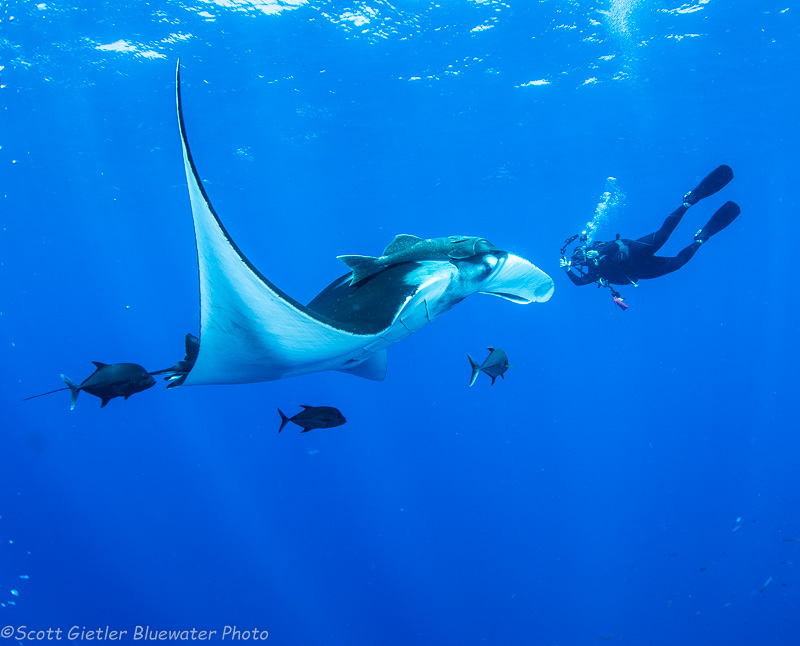

Two dive sites in Socorro are known to be the most mind-blowing: The Boiler and Roca Parida. Dive with the robust population of oceanic manta rays that regularly visit The Boiler. Observe these gentle giants as they glide and dance overhead in your bubbles as they gather at the cleaning stations of the submerged pinnacle. The experience is breathtaking: a rare opportunity to get up close and personal with these magnificent creatures.
Explore the thrilling shark diving at Roca Partida, where you can encounter vast numbers of Galapagos, silky, and hammerhead sharks, plus the peculiar sight of dozens of whitetip reef sharks stacked and wedged into crevices along the pinnacle. Top all this off with dives featuring frequent appearances from large gamefish species such as tuna, wahoo, and marlin, some very friendly dolphins, and occasional sightings of whale sharks and humpbacks.
Find out about exciting shark cage diving destinations.




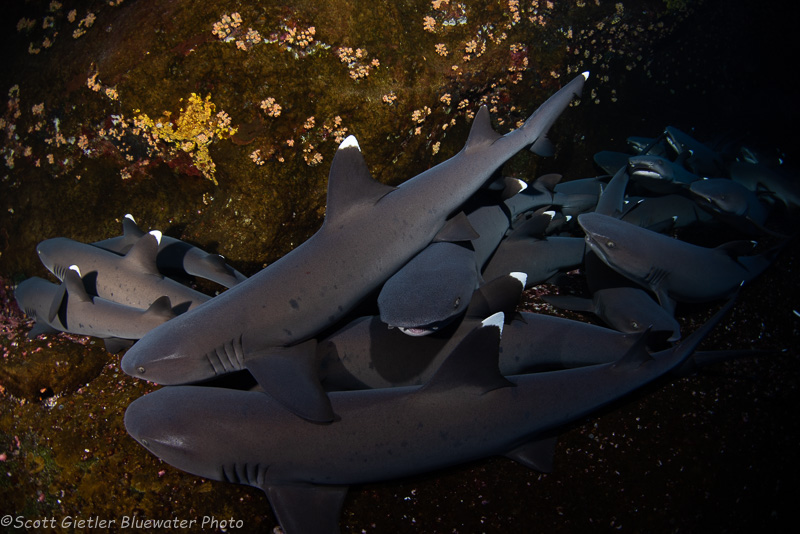

Interested in diving in Mexico? Check out our list of Mexico Dive Resorts.
Practical Info
Diving Season: November to May is the primary dive season; however, species vary during this period. November and December mark whale shark season, humpback whales are present in February and March, and May and June are the best months for bait balls and whale sharks.
Skill Level: Advanced. Suitable for experienced divers due to choppy seas and often strong currents.
Water Temperature: Cold to Mild with a range from 70-74F (21-23C) in February and March and up to 82F (28C) in November, December, May, and June.
Getting There: Easy. Fly to Los Cabos International Airport (SJD) and follow your agents instructions to arrive at your liveaboard departure point. Alternatively, you can fly directly into Cabo San Lucas International Airport (CSL), where some boats depart. Once onboard, most boats take about 24 hours to reach the Socorro Islands from both departure points.
Where to Stay: Liveaboards are the only way to dive the uninhabited Socorro islands. There is a full range of boats, from budget to luxury, and most trips last eight nights. We heartily recommend the MV Valentina and the Socorro Aggressor as examples of excellent liveaboards that visit this area.
Non-Diving Activities: None while on the liveaboard; however, some activities are available at the departure points of Cabo San Lucas and, to a lesser degree, San Jose Del Cabo. Golf, fishing, and cultural excursions are popular pastimes.
View the availability of some of the best liveaboards and in Socorro and book online at the best price!
6. Fiji
Jacques Cousteau could not get enough of the spectacular diving in Fiji, and neither can we. Located in the South Pacific, approximately 1,300 miles northeast of New Zealand, the roughly 300 islands that make up the Republic of Fiji are where you'll find the best scuba diving with soft corals. Fiji's natural landscapes are as rich and exciting below the waves as they are above water, making this a favorite of divers and non-divers.
Soft Coral Capital Of The World
Vibrant soft coral reefs in Fiji are second to none, providing an exquisite multi-colored backdrop to every dive and excellent opportunities for stunning underwater photography. The reefs boast abundant marine life, making fantastic photography subjects and a great place to practice your wide-angle technique.
The lush reefs flourish as the currents intensify, playing host to myriad photogenic species along glowing coral walls. Expect to spot angelfish, butterflyfish, anemone fish, anthias, hawkfish, moray eels, and ribbon eels, to name but a few. Although sharks are not abundant on these dives, there are notable exceptions. One of the best shark dives in the world is at Beqa Lagoon, where the Shark Reef Marine Park is home to up to eight species, including grey reef, whitetip reef, silvertip, lemon, bull, and tiger sharks. Consider taking a photography course before or during your dive trip to Fiji. Discover why the colorful aquariums of lush soft-coral gardens and dive sites such as Rainbow Reef and Mellow Yellow are one of our favorite destinations.


"Fiji has a reputation as the soft coral capital of the world, and divers who have been to Fiji can attest to that honor. The soft coral gardens found at dive sites around the Bligh Waters and Rainbow Reefs regions will mesmerize any diver with the cacophony of colors and multitude of anthias dancing around them. Bula!" - Bluewater General Manager & Trip Leader Tim Yeo






Learn what to expect while diving in Fiji by reading our Dive with Bluewater Fiji trip recap.
Practical Info
Diving Season: Year-round.We love to visit Fiji in the transitional months of October and November. Weather can vary between islands; however, the seasons are generally split from June to October (Dry Season, windy and cooler air temperatures but better underwater visibility) and December to April (Wet Season, warmer air temperatures).
Skill Level: Beginner to experienced. There is some diving to suit all levels; however, we recommend you have experience with strong currents to visit the best dive sites.
Water Temperature: Cool to warm. The dry season is 74-76F (24C), with August being the coldest month, and the wet season is 80-83F (27-28C) with February and March being the warmest months.
Getting There: Easy: Fiji is one of the most accessible Pacific destinations. Fly directly from Los Angeles International Airport (LAX) to Nadi International Airport (NAN) on the main island. If transferring to an outlying island, the domestic terminal is next to international arrivals; most fights are less than 60 minutes.
Where to Stay: Most diving is resort-based, and a wide range of resorts are available based on comfort level. Read Bluewater Travel's Tim Yeo's review of Paradise Taveuni to give you a little taste of paradise, or learn more about our Preferred Partner, Volivoli Bech Resort. There are also a couple of excellent liveaboards servicing the Fijian islands.
Non-Diving Activities: Abundant. Fiji is fun and lively, offering plenty of cultural and outdoor experiences. Visit traditional villages and temples, hike to waterfalls and caves, or enjoy a round of golf. You can also take a day cruise or boat hire to explore outlying islands.
Check out our list of Fiji dive resorts or contact us to help you plan your trip!
7. Dumaguete, Philippines
Another longtime favorite of Bluewater, Dumaguete, Philippines, holds a steady spot on our list. Dumaguete diving suits everyone, from beginners to technical divers, with incredible muck diving, coral walls, jetties, and artificial reefs. Enjoy a mixture of boat and shore diving as you stay at one of the many land-based accommodations in Dumaguete or Dauin.
Exceptional Variety And Quality
Dumaguete is one of the few destinations in the world that caters to various interests, all at an exceptional standard. Describing it as an all-around dive area does not do justice to the world-class macro, coral reefs, schooling jackfish, and famous whale sharks of nearby Cebu.
Minutes from the beachfront resorts, the in-shore Dauin sites are easy to get to and home to myriad critters and macro subjects to rival any top muck-diving destination. Search for frogfish, dragonets, pipefish, nudibranchs, squid, octopus, seahorses, shrimp, and crabs. On our trips, some guests have seen 40 frogfish on one trip!


One thing we love about Dumaguete is that less than 35 minutes from Dauin, the spectacular coral walls and reefs of Apo Island provide some of the best wide-angle diving in the world. Drift past sites such as Coconut Point to spot sea snakes, turtles, blue ribbon eels, and huge schools of jacks. There is also notable macro life at Apo Island, creating a rare opportunity for divers with different interests to enjoy the same sites. We struggle to think of another destination that provides such a range of world-class diving in such a small area.
Interested in diving the Philippines? Check out our list of Top Dive Sites in the Philippines.




Practical Info
Diving Season: Year-round. The primary dive season runs from October through June, and we like to visit in June and July during the end of the dry season.
Skill Level: All levels, from beginner to technical.
Water Temperature: Warm. Expect temperatures of around 80F (27C) year-round.
Getting There: Fly internationally to Manila International Airport (MNL), then take a 1-hour flight to Dumaguete-Sibulan Airport (DGT).
Where to Stay: Some of the best luxury resorts are in Dumaguete; however, plenty of more affordable options are available. Although some liveaboards also service the area on their Visayas itineraries, we prefer to stay at land-based resorts as all dive sites are within easy reach.
Non-Diving Activities: Moderate. Most resorts offer whale shark snorkeling trips to Oslob, where sightings are almost guaranteed. Many resorts have exceptional spas, restaurants, pools, and great snorkeling, making Dumaugete one of the top destinations for divers traveling with non-divers.
8. Papua New Guinea
Experience the spectacular variety of diving in Papua New Guinea, a less-frequented region of the South Pacific. Well off the beaten track, every trip to Papua New Guinea (PNG for short) is an adventure. You wont find any high-end luxury resorts or liveaboards; however, youwillfind exceptional diving, which is why weve added PNG to our top dive destinations list for 2025.
Top Spot Off The Beaten Path
Like many remote destinations, the reefs around PNG are largely untouched and in pristine condition. Unlike many places on this list, PNG is not well-known for any one specific thing but offers a well-rounded dive site portfolio, including reefs, walls, macro, currents, and wrecks. Papua New Guinea has diving to suit every interest, so select a region that best suits your preferences.


Head to Milne Bay to get your macro fix and look for critters, including flatworms, ghost pipefish, nudibranchs, seahorses, frogfish, and even rhinopias. Visit Kimbe Bay for some of the worlds most stunning coral reefs and encounters with barracudas, sharks, and potential whale sightings. Wreck lovers will be most satisfied with the diving around Kavieng, where youll discover some great World War II wrecks and spot larger animals like sharks, dog-tooth tuna, and barracuda.






With its remote location and travel challenges, we strongly recommend you book your trip to PNG with an experienced travel agent. At Bluewater Travel, we are experts in dive travel to Papua New Guinea. In addition to running group trips there, some of our agents have visited PNG up to six times! We can answer your questions, ensure you know what to expect, and plan your trip to avoid the inconveniences and disruptions that are more likely to occur in this area.
Practical Info
Diving Season: Year-round, with high season from May to November. We recommend different months for the different regions of PNG, so read our guide to diving Papua New Guinea for more information.
Skill Level: All levels.
Water Temperature: Warm. Temperatures of 79-88F (26-31C) year-round.
Getting There: Very challenging. Fly into Jacksons International Airport (POM) in Port Moresby from Manila (MNL) or Singapore (SIN) and plan to spend a night before departing on a domestic flight to your preferred destination.
Where to Stay: Resorts with dive facilities are available in the most popular areas, or you can choose a liveaboard. Papua New Guinea resorts are basic but comfortable so dont expect luxury or fine dining in this remote region. Tell your travel agent about your expectations to avoid any surprises on arrival.
Non-Diving Activities: Nature and culture focused. PNG boasts surfing, bird watching, kayaking, hiking, and fishing. Immerse yourself in the indigenous culture by visiting local tribes.
9. Cozumel, Mexico
The Caribbean boasts warm, crystal-clear water and excellent year-round diving, and its one of the easiest destinations to reach from North America and Europe. These highlights, combined with reefs full of vibrant sponges, a variety of calm conditions suitable for all experience levels, some more challenging sites for advanced divers, and access to the nearby cenotes of Yucatan make Cozumel a perfect fit for our top diving destinations.
Vibrant Sponges And Nearby Cenotes
Dive Cozumel to explore the Mesoamerican Barrier Reef, home to some of the most spectacular sponges and a wide variety of coral and fish species. Cozumels bounty of dive-centric resorts makes it the perfect place to log the maximum number of dives during your trip. Underwater photographers will face the challenge of deciding which lens to take on a given dive, with plenty of macro and wide-angle opportunities. Like much of the Caribbean, corals around Cozumel have been affected by bleaching events; however, the diving is still high quality and enjoyable.






The reefs are very nice. Some coral has bleached, but I hardly noticed it because there are so many colorful sponges. I also had an awesome close encounter with a huge eagle ray feeding in the sand. - Bluewater Travel's Scott Gietler visted Cozumel in November 2023
Visit the nearby cenotes on the mainland of the Yucatan Peninsula for mind-blowing dives in these unique freshwater sinkholes. The extraordinary topography of these limestone caverns creates an ethereal experience available to all divers (and snorkelers). You can visit the cenotes on a day trip from Cozumel or consider spending some time in Playa del Carmen to explore these fascinating caves over multiple days.
Practical Info
Diving Season: Year-round. We love to visit Cozumel from May to July when there are fewer crowds and great weather. The high season is from December to April. The cenotes are a true year-round destination unaffected by weather.
Skill Level: All levels.
Water Temperature: Warm. Temperatures of 75-85F (24-29C).
Getting There: Easy. Fly to Cozumel International Airport (CZM) and take a quick shuttle or taxi to your resort. There are direct flights to Cozumel from many major airports.
Where to Stay: Resorts in Cozumel were designed with divers in mind, and you will have plenty of options to choose from, whether you prefer an all-inclusive chain resort or a smaller hotel.
Non-Diving Activities: Plentiful. Shopping, restaurants, and nightlife are abundant in Cozumel. Other activities include parasailing, kayaking, fishing, horse riding, and nature and cultural tours.
10. French Polynesia
Each dive in French Polynesia is rich and diverse, with a bounty of high-caliber sites to suit all levels and interests, making it a long-running customer and staff favorite. However, what really sets these islands apart is the concentration of world-class shark and big animal dives centered around a tiny cluster of islands west of the region.
Warm Water Diving With Big Animals
Often casually referred to as Tahiti, French Polynesia is home to huge numbers (some estimate millions) of at least 16 shark species. The islands of Rangiroa, Bora Bora, and Fakarava- a UNESCO Biosphere Reserve - are some of the best places in the world to encounter sharks while scuba diving. The crystal-clear waters around the islands lagoons and reefs afford intimate encounters with lemon, whitetip, blacktip, grey reef, and hammerhead sharks, all to a backdrop of schooling barracuda, eagle rays, dolphins, turtles, and a multitude of reef fish.
"The reefs are just as healthy as last year, the sharks are just as abundant, as is the rest of the marine life like napoleons, schools of paddletail snappers, red snappers, and blue striped snappers." -Bluewater Dive Travel's General Manager, Tim Yeo.


To the southwest, the island of Moorea also boasts fantastic shark diving; slack currents and fascinating underwater topography make it accessible for all levels. However, Moorea is a world-class destination because it is arguably the best - and one of only three worldwide - where visitors can legally swim with humpback whales. From July to November, large numbers of these ocean giants migrate to the outer reefs and atolls of the island in search of mates or to nurse their calves. Snorkeling with them is truly a bucket-list experience, sealing French Polynesia as an extraordinary destination.
Read about our 2023 Morea Trip!




Check out our Moorea destination guide.
Practical Info
Diving Season:Year-round, although December and January are the wet months. To snorkel with humpback whales, visit between July and November.
Skill Level: All levels.
Water Temperature:Warm. Temperatures range between 79 and 84F (26 and 29C), with average temperatures around 81F (27C).
Getting There:Fly directly from Los Angeles International Airport (LAX) or San Francisco International Airport (SFO) to Faaa International Airport (PPT) on Air Tahiti Nui, then take a ferry or short domestic flight to outlying islands.
Where to Stay:Resorts are the most popular, with options for all comfort levels. Some liveaboard diving is also available.
Non-Diving Activities:Plentiful. Most resorts can arrange cultural activities like Polynesian dance and pearl farm visits. Hiking and sightseeing are popular, as is visiting the local markets.
Find a French Polynesia dive resort or contact us for land-based options!
11. Lembeh, Indonesia
Renowned for its spectacular macro life, the Lembeh Strait in North Sulawesi is within easy reach of Manado's international airport. Dive resorts in Lembeh cater to underwater photographers and offer guides specialized in finding even the tiniest critters that camouflage into their habitats. It's a great place for macro lovers to check multiple unique marine creatures off their bucket lists.
Macro Critters Galore
Discover a myriad of unusual macro life in Lembeh Strait - one of the top scuba diving destinations in the world to visit in 2025. Explore the dark volcanic sand while you search for marine life, including pipefish, seahorses, frogfish, nudibranchs, and more. Expect calm and easy diving with minimal surge or current, making it the ideal place to practice underwater photography skills. If you're looking for more variety, combine your trip to Lembeh with other areas in Sulawesi to dive the walls of Bunaken and the reefs of Bangka.


Diving in Lembeh is primarily done from the many dive-centric resorts in the region. With year-round warm water and consistent conditions, along with Anilao, Lembeh is a favorite among macro photographers who want to extend their bottom time to capture the perfect shot of each marvelous subject. While you work on that shot, your expert guide will search for the next unique critter. If you're not a photographer, Lembeh is perfect for all divers who enjoy the slow pace of searching the black sand for something they've never seen before.
"The sheer diversity of marine life in Lembeh is astonishing. From the elusive rhinopias to the comical frogfish to the court jester of Lembeh, the mimic octopus, we encountered a myriad of creatures... On any trip where a long list of highly valued subjects are found on the first day, you know you are in a special place." - Erik Lukas, Trip Leader on Bluewater's October 2023 Lembeh Workshop






Practical Info
Diving Season:Year-round, with slightly colder water in July-August and wamer water temperatures in January-February.
Skill Level:All levels, with a heavy focus on underwater photography.
Water Temperature:Warm. Temperatures hover around 77F (25C) in July-August, when we recommend you layer for longer dives and up to 82F (28C) in January-February.
Getting There:Fly into Manado (MDN) via direct flights from Singapore (SIN) or Jakarta (CGK). Resorts typically offer airport pickup; expect to settle into your room a couple of hours after collecting your luggage!
Where to Stay:Diving is almost entirely land-based, with a great selection of comfortable and luxury resorts. Some resorts are spread across hillsides, requiring more walking and stairs. Contact our travel experts to find out which resort is right for you.
Non-Diving Activities:Limited. Visit Tangkoko National Park to see unique monkeys, including the spectacularly cute Tarsier and the Celebes Crested Macaques.
Join Bluewater Travel's next photography workshops in Lembeh:
Lembeh Macro Critter Workshop 2026 | Sep 17 - 24, 2026 |Trip Leader:Mark Hatter | From$2,153
12. The Red Sea
With stunning visibility and a wide variety of dive sites, the Red Sea remains home to some of the best scuba diving in the world. The region offers options for every diver and is popular with Europeans as an easy-to-reach dive destination. Reefs, sharks, and famous wrecks await in an area popular with liveaboards but is also an excellent shore diving destination.
Reefs, Wrecks, And Ancient History
The Red Sea is to the Middle East, as Raja Ampat is to Southeast Asia. A bountiful and varied playground of stunning reefs, exceptional marine life, and comfortable dive conditions provide an alluring alternative to some of the more far-flung destinations. Its isolated geographical location and distinctive climate mean that almost 20% of the 1000 fish species found here are unique to the Red Sea. Over 200 hard and soft coral species flourish on extensive shallow reefs that drop dramatically into deep walls and canyons.


Roughly speaking, we categorize the Red Sea in two distinct areas. The northern sites from Hurghada to Dahab, including Sharm El-Sheikh, offer a plethora of sheltered inshore reefs and walls; in fact, the resort house reefs along this stretch of coastline are second to none. There are also numerous accessible wrecks here, including the famous SS Thistlegorm, Dunraven, and Carnatic, to name a few.






Venturing south from Hurghada, the dive sites become more remote and spectacular. The Brothers, Elphinstone Reef, and Daedalus Reef feature steep drop-offs and overhangs that attract all manner of pelagics, and divers have the chance to spot oceanic whitetips, threshers, and the occasional hammerhead gliding silently past. As a world-class diving destination, the Red Sea really does tick all the boxes. With hundreds of top-quality dive sites, the only problem is deciding where to go.
To learn more about what it's like to dive in the Red Sea, read our Egypt and Jordan trip recap.
Practical Info
Diving Season: Year-round diving is available, although some liveaboards dont run in the cooler months of January and February. From June through August, the air temperatures are especially hot. The northern resorts can get crowded from March through May and September through November.
Skill Level: All levels; however, Deep South itineraries require more experience.
Water Temperature: Cool to Warm. Temperatures get up to 84F (29C) in the summer and drop as low as 70F (21C) in the winter.
Getting There: There are regular direct flights to Sharm El-Sheikh International Airport (SSH) from the UK and other European hubs and some direct flights from the US. Connect at Cairo International Airport (CAI) to reach Hurghada or Marsa Alam (departure points for many liveaboards).
Where to Stay: Red Sea liveaboards, such as the Emperor Elite or M/Y Blue Melody, offer great value for money and are the best way to cover as much ground as possible during your trip. Resorts in Dahab and Sharm El-Sheikh are popular with divers visiting the northern regions where shore diving and day boats provide access to hundreds of sites. However, the remoteness of the southern sites means they are only accessible via liveaboard.
Non-Diving Activities: Plentiful. As a popular tourist destination, there is a wide range of top-side activities to suit all tastes. With options including shopping and dining, cultural excursions, camel rides, desert trips, sightseeing, and various watersports, there are activities for everyone. Extend your trip an extra week (or more) to tour around the ancient sites of Luxor and Cairo, including the famed Pyramids of Giza.
Interested in diving the Red Sea? Find a liveaboard trip or contact us for land-based options!
13. Maldives
This archipelago nation in the middle of the Indian Ocean isnt just for honeymooners; the Maldives is also one of the best places for scuba diving, securing it a new spot on our list for 2025. The sprawling network of atolls offers a variety of diving experiences and thrilling encounters with marine life. With over 1,000 islands, the range of land-based accommodations - from private island resorts of unparalleled luxury to boutique hotels in the heart of locally inhabited islands - provide unique and memorable experiences. The Maldives also boasts plenty of liveaboards to explore a wider area.
Amazing Atolls And Exciting Encounters
Diving in the Maldives is well-known for its large marine animals, including whale sharks, manta rays, and various sharks. What you see partially depends on what atoll you visit, with Fuvahmulah renowned for tiger sharks, Alif Alif for mantas, and Baa for whale sharks. Hanifaru Bay is a snorkel-only spot famous for its robust population of hundreds of mantas and regular whale shark encounters. There are dive sites suitable for beginners, although most of the best diving is in the channels where strong currents bring loads of fish and pelagics.






The corals are not in beautiful shape, but the marine life is abundant and there are lots of sharks. Fish are not shy at all, and we even had a macro dive for a bit of a change. We saw lots of fusiliers, snappers, Napoleon wrasse, sharks, big rays, eels, and mantas. - Bluewater Travel Advisor, Anne, visited the Maldives in September 2023
"Dive sites in the Southern Atolls of the Maldives boast a great mix of sharks, healthy reefs, and macro subjects... Diving with tiger sharks at Tiger Zoo was amazing." - Dan Bishop, Bluewater Trip Leader, of his 2024 visit to the Maldives
The scenery in the Maldives is dreamlike; picture white sand beaches transitioning into clear turquoise water, tropical jungles sprouting almost impossibly from tiny islands ringed with coral reefs, and spectacular sunsets. While the Maldives has a lot to offer, divers looking for healthy, vibrant coral reefs will prefer some of the other destinations on this list, such as Fiji or Papua New Guinea.
Interested in diving in the Maldives? Find Maldives liveaboard availability or discover our top Maldives dive resorts.
Practical Info
Diving Season: Year-round, with the rainy season in May through July. We recommend visiting in January to April and August to November for the best conditions and marine life encounters. Contact an agent to discuss what you want to see and the best atoll and time of year to visit.
Skill Level: Suitable for all levels.
Water Temperature: Warm. Temperatures range from 80-86F (27-30C) year-round.
Getting There: Fly into Velana International Airport (MLE) in Male, then take a domestic flight or a boat transfer to your destination.
Where to Stay: Luxurious private island resorts, smaller hotels and guesthouses on local islands, and a wide range of liveaboards are available in the Maldives. Divers of all interests and budgets will find suitable options to make the most of the region.
Non-Diving Activities: Moderate. It depends on what you want to experience and where you stay. Private islands are limited to the resorts activities, which typically include spas, dining, and watersports such as kayaking. Local islands enable you to immerse yourself in the local culture by visiting markets, villages, and local beaches (but note there are strict regulations in attire, and no alcohol is permitted). Liveaboards often offer beach barbeques, island visits, and kayaking, and some even offer spa treatments.
This just a taste of some of the phenomenal dive destinations you can access through Bluewater Travel. But theres much more! Click here to see six locations added to ourtop remote dive destinations list and don't miss our top 20 dive sites in the world.
How To Book A Trip
Bluewater Travel can book you on a liveaboard or resort in Socorro, French Polynesia, Galapagos, Cocos, the Bahamas and 40+ other destinations in the world for the same cost or less than booking any other way. We know the diving, seasons, boats and cabins and when to go better than anyone else!
Email us or write to us in the live chat box to book a resort, liveaboard, or a Bluewater trip!
